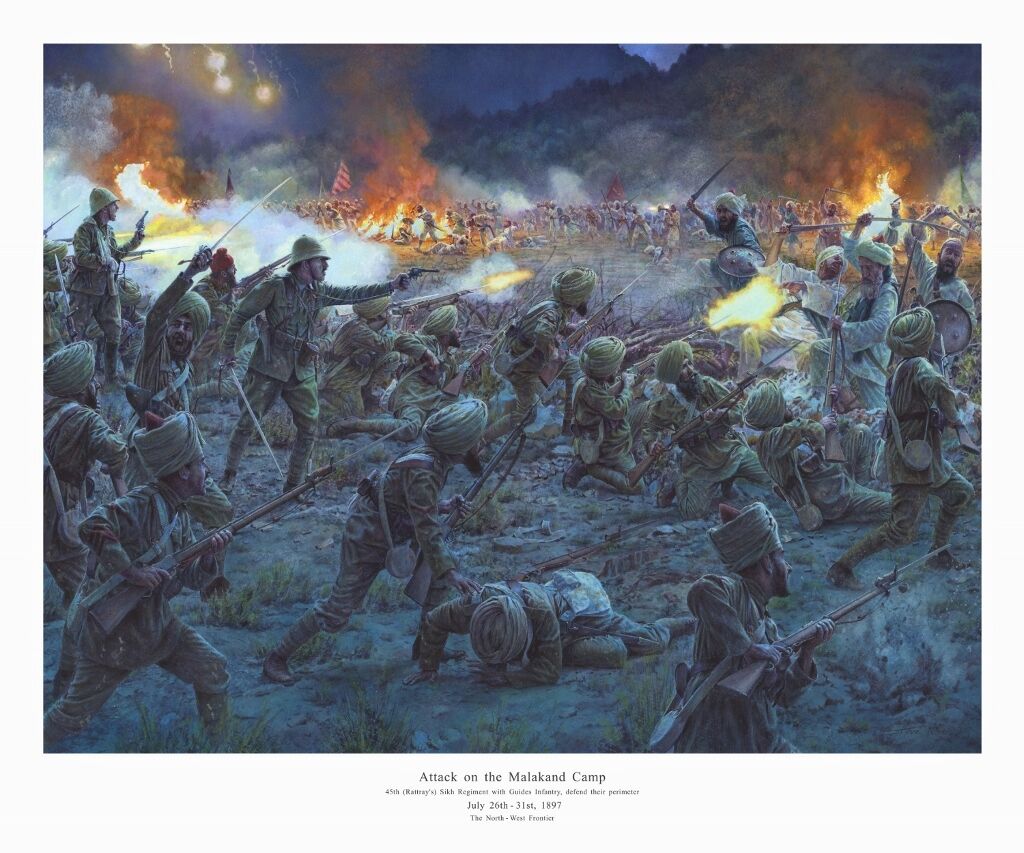Tensions had been growing among the Pathan tribes on British India's North-West Frontier. Resentful and distrustful of spreading British influence and the erosion of their traditional way of life, they were further enraged by the division of their lands by the Durand Line.
Encouraged and led by the Sartor Faqir (Mullah Mastan) the uprising that was brewing would be on a scale never before seen on the frontier and it would erupt in Malakand.
Clashes and rumours of unrest had been spreading and on 26th July the Malakand garrison was put on alert when it was learnt that the mullah had assembled a great following, less than 20miles away.
The Malakand camp was in an extended position, overlooked by high hills and ill suited to defence.
Commander of the garrison, Col. Meiklejohn, had 3 battalions of infantry (45th (Rattray's) Sikh Infantry, 24th Punjab Infantry & 31st Punjab Infantry), a company of Madras sappers and miners, a squadron of 11th Bengal Lancers and 2 mountain guns.
At 9.30 pm thousands of tribesmen launched what would be the first of many assaults on the Malakand camp.
There followed five nights of intense fighting. The garrison would face rifle fire from the surrounding heights and ferocious attacks by masses of fanatical swordsmen. With drums beating and banners waving they would fall upon the garrison from the hills.
In the burning heat of the day when the attacks subsided, the garrison would repair and bolster the defences, strengthening the abatis and barbed wire, preparing bonfires to illuminate the attackers.
On the second night the defenders were joined by Guides cavalry and infantry who'd marched 32 miles overnight and through the scorching heat of the day from Mardan.
In this painting we see a section of the perimeter held by the 45th Sikhs, supported by Guides Infantry. Those tribesmen who managed to break through the defenses, were soon met by sepoys held in reserve.
For five exhausting nights the garrison stood their ground against fierce, determined and brave Pashtun attacks. Having suffered heavy casualties and with the Mullah reportedly wounded the tribesmen lost heart and the assaults on the camp ended. The rebellion and fighting would continue for another month.
The Pashtun tribesmen suffered heavy casualties. It is not known how many, as the practice of the tribes was to carry away their dead and wounded. Among the garrison, 3 British officers and one NCO were killed with ten British and 7 Indian officers wounded. 27 Indian soldiers were killed with 126 wounded.
Private commission
EDITION: 25 signed giclée prints only.
PRICE: Includes UK postage.
PRINT SIZE: Dimensions are approximate and include a signed border

